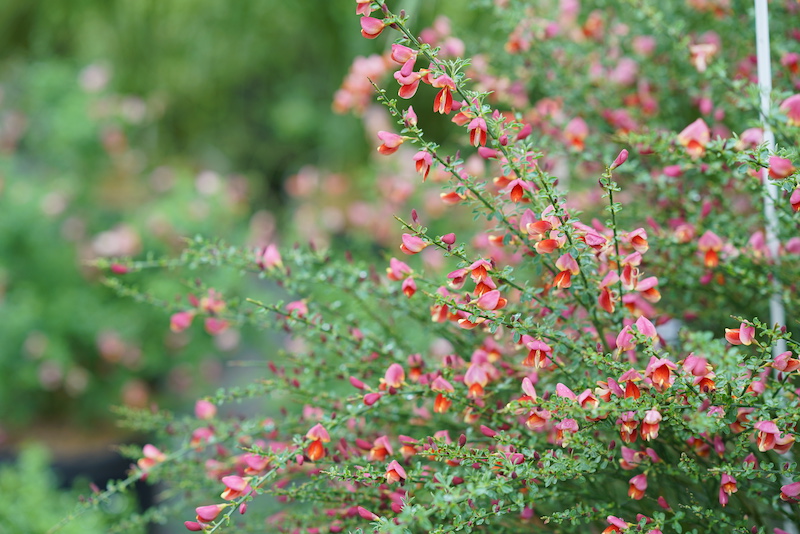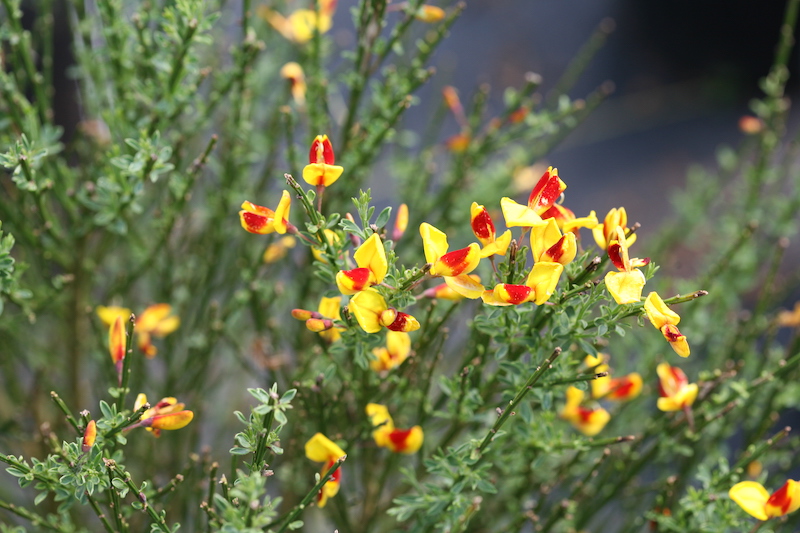Growing Scotch Broom
Scotch Broom is an upright, deciduous flowering shrub grown in Hardiness Zones 5-8. It bursts into fragrant proliferous blooms during late spring to early summer. There are several color varieties of Scotch Broom, all grow with minimal care in lean soils in full sun locations. Scotch Broom is a resilient shrub that is cold hardy down to Zone 5, is deer resistant, and can tolerate drought, harsh sun, and salt conditions. It doesn’t require extra care or fertilization to bloom; just give it plenty of sun and well-draining soil, and enjoy the show.

Planting Scotch Broom
Scotch Broom loves a sunny spot. Find a location in your garden that receives at least six hours or more of direct sunlight daily for well-balanced growth and plenty of blooms. The soil should be well draining with a slightly acidic pH. Scotchbroom thrives in lean, low-fertility soils, just as long as the soil does not retain water. Scotch Broom is tolerant of salt and drought once it's established, so it's a great choice for planting near salt-treated walkways or in coastal areas.
Watering Scotch Broom
Scotch Broom is quite drought tolerant and does not require frequent watering when it reaches maturity. It does not prefer to sit in soggy soil, so be sure to plant it in well-draining soil. You should water newly planted Scotch Broom more consistently when initially planted during its first growing season, particularly during prolonged dry spells until it is fully established to tolerate drier conditions.
Fertilizing Scotch Broom
Scotch Broom does not require extra fertilization because it is a nitrogen-fixing shrub; it takes nitrogen from the atmosphere and stores it in its roots. The nodules on the roots are covered in bacteria where nitrogen fixation naturally takes place in the soil, generating nutrients that feed the plant and build healthy soil.
Pruning Scotch Broom
Scotch Broom blooms on old wood, so the proper time to prune is directly after blooming. Prune approximately 1/3 off the branches at most, and begin pruning a younger plant to encourage uniform, sturdy growth. When pruning, try to open up the center of the shrub to allow ample sunlight to reach all stems. If you notice dead, diseased, or broken branches, you can prune and discard those at any time of the year.

Caring For Scotch Broom in Pots
Scotch Broom readily grows in containers; its lovely, upright, vessel shape makes a striking display in a container large enough to accommodate its mature height and width. Depending on the variety, Scotch Broom can reach over 4-6 ft wide and tall. Yearly pruning may be required to keep it manageable when planted in a container. Plant in average soil in a container that has plenty of drainage holes. Scotch Broom does not enjoy sitting in soggy soil, so be sure the soil is fast draining. Place the container in a full sun location; sunlight is key in developing more flowers, as optimal flowering requires at least 6 hours or more of direct sunlight.
Winter Care for Scotch Broom
Scotch Broom is winter hardy down to Zone 5 and generally doesn’t require extra winter care. If you live in a particularly harsh climate, you can put a few inches of natural mulch around the base of the root system for added winter protection.
Common Scotch Broom Care Questions
How Often Should Scotch Broom Be Watered?
Water the broom plant only twice per month, and only if there is no rain. Deep, slow waterings are best. Use a soaking or drip hose to let water seep into the ground.
When Should Scotch Broom Be Cut Back?
Broken or diseased branches can be pruned off at any time of the year, size or shape pruning should only be undertaken in late spring, immediately after flowering. This rule about pruning a scotch broom shrub in springtime is critical if you want an attractive bush.
Is Scotch Broom Poisonous?
Scotch broom will displace native vegetation and beneficial plants causing loss of grassland and open forest habitat. The seeds and other plant parts are toxic to humans, horses and other livestock. Broom is on the Dog's Trust's list of poisonous plants, containing toxic alkaloids that can have an adverse effect on animal's heart and central nervous system, if ingested.
Is Scotch Broom An Annual Or Perennial?
Scotch broom is a perennial shrub with bright yellow flowers and stiff, slender branches.
How Long Does Scotch Broom Bloom?
Plants bloom between March and June, before leaves emerge.
What To Do With Scotch Broom After It Blooms?
Scotch Broom should be pruned after flowering to ensure a good display of flowers the following year. Cut off the parts of the stems that have flowered, taking care not to cut into old wood.
Is Scotch Broom Invasive?
Scotch Broom is considered to be invasive in many regions, particularly the Pacific Northwest. They produce seeds that can spread far and wide and live in the soil for decades, prolifically.
Have a question about Scotch Broom Care? Fill out the form below and we will try and get back to your question as soon as possible. We may even feature your question in this article to help other gardeners!
 |
Author Chris Link - Published 01-26-2023 |
